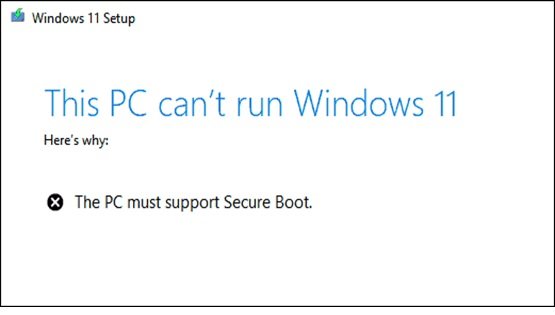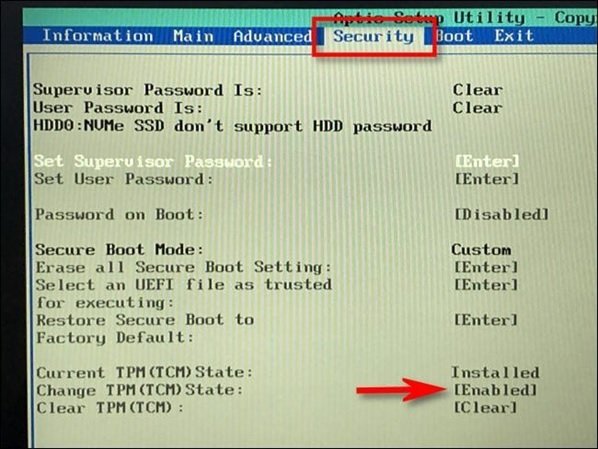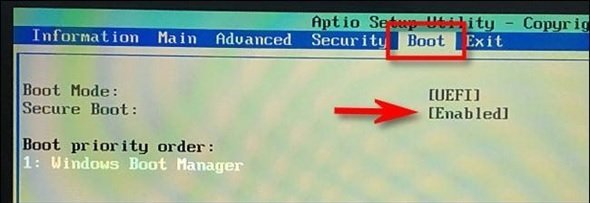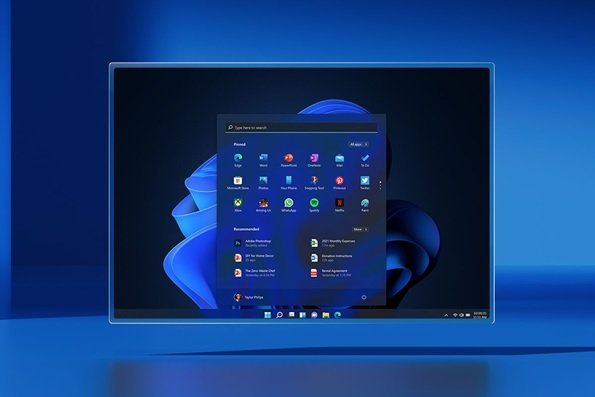How To Fix The Error Message Of Not Installing Windows 11?
To Fix The Error Message As you know, it has been almost a week since Microsoft officially introduced Windows 11, and in the demo, it was prepared for it. It mentioned a wide range of functionalities that will tempt any user even to run the trial version of Windows 11.
However, Windows 11 can not be installed on any Windows 10 or trial versions. This issue has caused many users to encounter this PC Can Not Run Windows 11 error message when installing Windows 11 on their current system and not know how to solve the above problem.
The main reason for this error is one of the important prerequisites that Microsoft emphasizes. This prerequisite may not be available on some systems and may be disabled on others. This article will show you how to solve your problem and set the option for this purpose in the BIOS.
Almost a month ago, trial versions of Windows 11 hit the Internet. Many users downloaded and installed them; however, many users initially received the error message that the TPM chip was missing or inactive.
To Fix The Error Message Of Not Installing Windows 11

If you are looking to install Windows 11, you need TPM 2.0 and Secure Boot
Windows 11 is very similar to Windows 10 in speed and smoothness, and it may be faster because it does not require a powerful processor, graphics card, or main memory.
However, it requires two important and practical features. The first is Secure Boo, which is also available on older systems. However, users must turn it off to install some Linux distributions or run certain software.
So, all you have to do is enable Secure Boot in the BIOS settings. TPM 2.0 is the second most important hardware feature that Windows 11 needs, but unfortunately, it does not exist on many systems.
It is impossible to say whether this feature is available on all motherboards. However, it may be present in your system. To do this, you must log in to the system BIOS and enable it if necessary.
TPM Activation
To install Windows 11 on your system, you must first enter the BIOS environment and the motherboard settings page. To do this, press the Del F1 or F2 keys when starting the system. If you want to install Windows 11 on your laptop, hold down the Fn key and press the F1 to F2 keys. Otherwise, the BIOS screen may not appear, and you may be logged in to the current operating system environment.
Of course, some laptops have a dedicated hardware key embedded in the device’s body, which opens the BIOS screen. When you enter the BIOS or UEFI screen on newer motherboards, go to the Security settings section.
This section has an option called TPM called Trusted Platform Module. If the above option is disabled, enable it. The image below shows how to do this.

As you can see in the picture, the above chip is installed on the motherboard and is active by default. If you do not see the above option in the settings of this section, it indicates that your motherboard does not support the above feature.
Enable Secure Boot
Now, you must activate the Secure Boot option, which indicates a safe boot. To make it harder for hackers to infect the system’s main files and prevent rootkits from quickly infecting digitally signed files of the Windows operating system, Microsoft has decided to allow Windows 11 to be installed only when the feature is enabled on the systems.
Click the Boot option in the top bar to activate the above feature. Select the Secure Boot option and enable it on the next page that appears.

After changing the above settings, you must save the new settings and exit the BIOS environment. To do this, select the Save and Exit option in the Exit section to save the changes and boot the system.
If the TPM option is not available on the BIOS settings page, it means that your system hardware is out of date and it is not possible to install Windows 11 in terms of hardware. However, a unique dynamic library (DLL) can be copied to the Windows 11 Installation Sources folder to bypass the above limitation.
What is a TPM chip?
TPM stands for Trusted Platform Module, a method of hardware encryption that some refer to as Hardware-Based Cryptography. Due to its physical security mechanisms, the chip is resistant to tampering and malware.
A TPM module is a control chip used to perform cryptographic operations. This module generates unique encryption keys for each piece of hardware.
The above module stores part of the password within itself, increasing the information security factor and making unauthorized manipulation of information difficult. This module is prefabricated on motherboards.
Of course, adding it to the motherboard as a side piece is possible. The TPM communication network interacts with the system via the LPC bus, which controls peripherals, or the SPI bus, which controls parts of the BIOS software.
Since TPM, the most critical textures include passwords, certificates, and cryptographic keys. Some software designs its TPM-based encryption keys, and Windows 11 intends to do the same.
However, the most crucial feature of TPM is that it does not depend on the operating system because it has its own middleware and logic circuit for processing commands. Independence makes a system more resilient to security threats and vulnerabilities.
TPM in the Windows operating system performs its activities in the form of hardware control before booting, ensuring the correct operation of the system and no unauthorized manipulation.
The most critical textures in the TPM include passwords, certificates, and cryptographic keys.
In addition, some software designs their TPM-based encryption keys, and Windows 11 intends to do the same.
However, the most crucial feature of TPM is that it does not depend on the operating system because it has its own middleware and logic circuit for processing commands. Independence makes a system more resilient to security threats and vulnerabilities.
TPM in the Windows operating system performs its activities in the form of hardware control before booting, ensuring the correct operation of the system and no unauthorized manipulation.
The most critical textures in the TPM include passwords, certificates, and cryptographic keys. Some software designs its TPM-based encryption keys, and Windows 11 intends to do the same.
However, the most crucial feature of TPM is that it does not depend on the operating system because it has its own middleware and logic circuit for processing commands. Independence makes a system more resilient to security threats and vulnerabilities.
TPM in the Windows operating system performs its activities in the form of hardware control before booting, ensuring the correct operation of the system and no unauthorized manipulation.
In addition, some software designs their TPM-based encryption keys, and Windows 11 intends to do the same.
However, the most crucial feature of TPM is that it does not depend on the operating system because it has its own middleware and logic circuit for processing commands. Independence makes a system more resilient to security threats and vulnerabilities.
TPM in the Windows operating system, in the form of hardware control, before booting the operating system, ensures the correct operation of the system and prevents unauthorized manipulation.
In addition, some software designs their encryption keys, and Windows 11 intends to do the same. However, the most crucial feature of TPM is that it does not depend on the operating system because it has its own middleware and logic circuit for processing commands.
Independence makes a system more resilient to security threats and vulnerabilities.
TPM in the Windows operating system performs its activities in the form of hardware control before booting, ensuring the correct operation of the system and no unauthorized manipulation.
